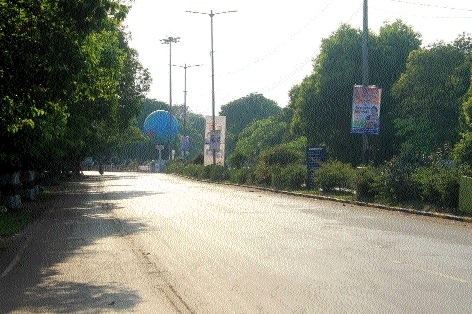COVID-19 Impact: Sharp drop in air pollution levels
| Date :23-Mar-2020 |

Staff Reporter :
Bhilai,
Fearing an outbreak of COVID-19 across Chhattisgarh, a positive thing is being noticed in urban parts of the state, as its air has seen a decline in pollutant levels. In all of urban areas consist of Raipur, Bhilai-Durg, Korba, Raigarh and Bilaspur, a 30% to 40% drop was seen in concentration of nitrogen oxide in second and third week of March 2020 as compared to same weeks of March 2019 as well as March 2020. A drop in concentration of PM 2.5 too was seen since restriction was imposed and preference of people to stay inside owing to panic of COVID-19.
According to report of System of Air Quality Weather Forecasting and Research (SAFAR) which analysed air pollution levels of 120 urban areas including five above cities of Chhattisgarh in second and third week of March revealed that most of cities saw a sharp drop in PM (Particulate Matter) 2.5 in this period. Even March 2020 (till March 20) could be considered best month at last five years in terms of clean air atmosphere and low air pollution level. “Fossil fuel emission mainly coming from vehicular traffic, is one of the major sources of Nitrogen Oxide (60% to 70%) and PM 2.5 (25% to 30%) in most of urban areas. Under fair weather conditions, Nitrogen Oxide levels are mainly controlled by its major sources of emissions (vehicular traffic), although changes due to weather cannot be ruled out.
Hence, if Nitrogen Oxide levels are reduced notably as compared to previous years, it may provide us a limit sign in reduction of emission in major sources” said the report of SAFAR. In capital Raipur, Bilaspur and industrial cities of Chhattisgarh, Bhilai-Durg, Korba and Raigarh, the major drop of 60% in PM 2.5 was noticed since second week of March when one patient of COVID-19 was diagnosed at Chhattisgarh. Because of fear, most of people preferred to stay inside and as per administration order, all commercial establishments as well as educational institutions have also been closed. This has reduced the vehicular traffic which contributes over 60% of air pollution. But Chhattisgarh State Pollution Control Board has not agreed completely with these figures of SAFAR.
The officials of board claimed that, although there has been a drop of pollutant level in some of urban areas but remaining urban areas like Rajnandgaon, Jagdalpur, Ambikapur and Dhamtari showed very little change in terms of PM 10 and PM 2.5 levels. Dr. Anita Sawant, Senior Officer of Chhattisgarh State Pollution Control Board Durg Chapter stated that apart from Raipur, Bhilai-Durg, Bilaspur, Korba and Raigarh, rest of urban as well as rural areas have less vehicles and industrial units, so air pollution level is not so high, but concern part is that, there is hardly any change in pollution levels of these urban parts, she pointed. But satisfactory issue in this COVID-19 fear is that, five major urban parts of state registered a good downfall of air pollution level since second week of March. “There was a little spike owing to industrial units, otherwise a drop of air pollution level was seen owing to less use of vehicles” asserted Dr. DN Sharma, Professor in Kalyan Postgraduate College, environmentalist and a member of SAFAR in Central India.